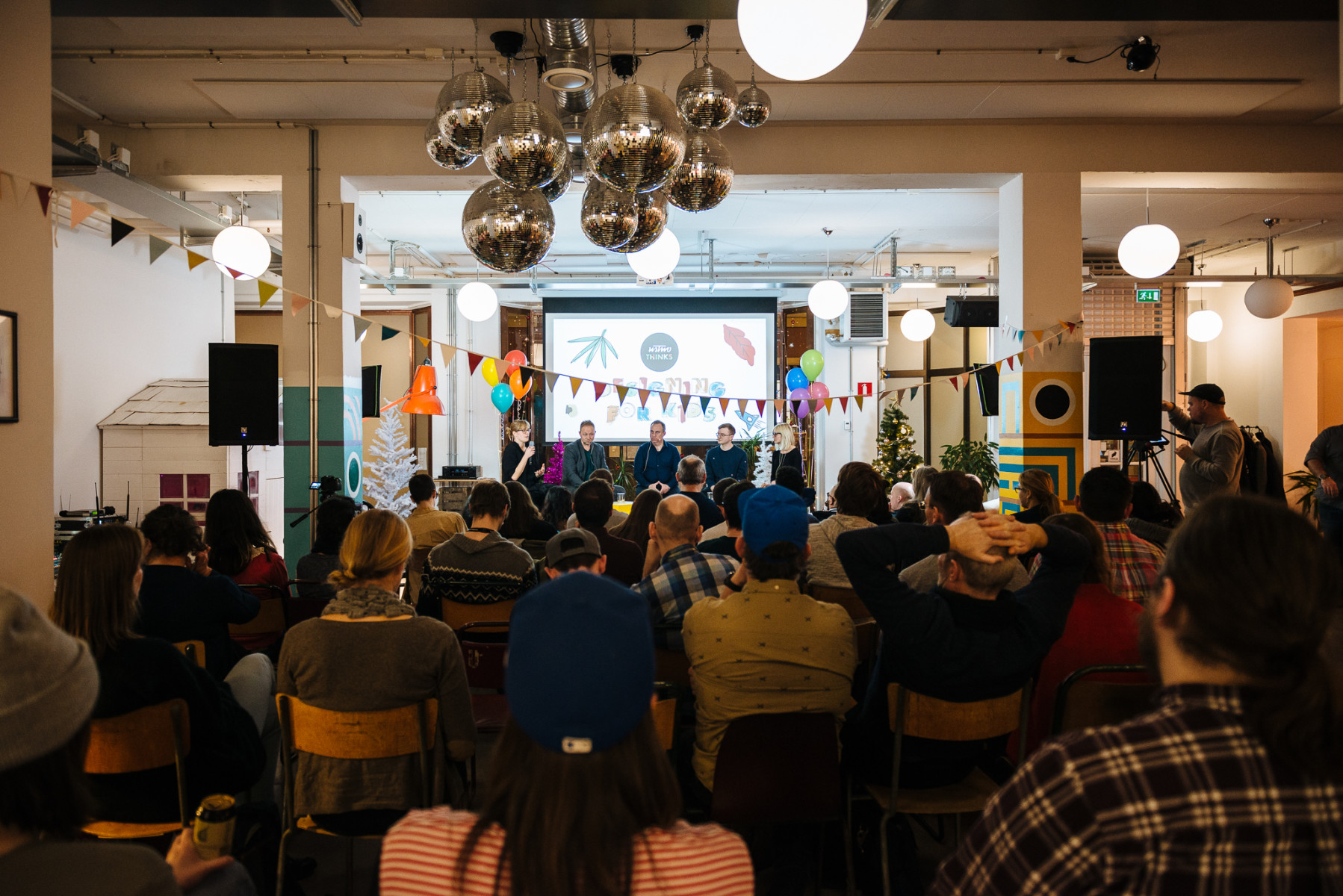The children of today are the first true digital natives of our society, and digital experiences are already having a major impact on all aspects of their lives. Having worked on multiple projects for kids like Alder Hey, Sky Kids and our internal BlipShop, we wanted to gather some clever minds on the topic and have a deeper discussion.
We had an engaging discussion about what makes a great experience, user testing challenges, enhancing natural play and our responsibilities as adults. Moderated by Marit Kile Hartshorn, we were super proud to have gathered an experienced panel consisting of:
- Jais Holm Christensen, LEGO
- Emma Nordung, ustwo
- Petter Karlsson, Toca Boca
- Daniel Spikol, Malmö University.
They first gave us a brief overview of their backgrounds and the aspects of designing for kids that they are passionate about (such as diversity, representation, free play, and education) before continuing on to the big questions.
Read on for a brief summary or watch the whole thing in the video below!
Embedded content: https://vimeo.com/247383817
User testing challenges
When designing for kids it’s vital to test concepts with our audiences. As grown ups, we often have a shared understanding of what makes for good and intuitive design. Working with kids on the other hand is a whole different playing field. When testing with kids, make sure that you’re setting up a neutral environment where you can avoid getting biased results. Avoid giving instructions and asking too many guided questions like “What do you think happens in this area?” will get you biased answers. Kids will pick up on desired outcomes, letting them play freely while observing them will give you a better result. Also, when letting two kids play and test together you'll sometimes see them guide each other, ask questions and discover new features.
Brutal honesty is also one of the challenges, and perks, when working with children. They will discard your app if something looks strange or if there’s something that disrupts the play environment, quickly changing to another app or even just pushing the test device away. Understand what want to test before you start and play together with them, understand what’s happening and try to follow their train of thought.

Co-designing with kids
Divergent and non-linear thinking decreases with age and as adults we only have 2% left of the capacities we had when we were young. Obviously, we could use some help and harness imagination from kids. In the Alder Hey project for example, we were lucky enough to being able to show kids what we’ve done every other week. This gave us an opportunity to get input on priorities, new features and see what really resonated with the kids. It’s very valuable to get outside of our own heads and ways of thinking. The truth is, to a large extent we’ve stopped playing as adults. On a good day we might be able to channel our inner child but it gets a lot better if we involve the kids in the actual process.
Enhancing natural play
Is it possible to keep the freedom of natural play and integrate it into digital experiences? Try to start by creating something familiar, keep the experience open and work from there. Adding analytics and tracking will show some interesting things and it can help you make decisions on what to focus on. Avoid adding a lot of features that the kids won’t understand but let them explore things and test the boundaries. This is a big part of the play experience in the physical space. Allowing for kids to try do things that aren’t expected and testing the boundaries of the app will cater to their natural curiosity. They will want to do “bad things” like playing with poo and do things that doesn’t necessarily make any sense for adults. They will challenge social norms and we should try to create worlds that aren’t controlled so it’s possible to do just that. As adults we might be uncomfortable with changing rules and things are supposed to be in a certain way, kids won’t have those same restrictions.

Negative impacts & responsibilities
We’re noticing that kids will play or watch something and replicate things in real life and devices are often blamed to cause more damage than creating opportunities. Too much of anything will always be a bad thing and we need to find the right balance. As producers we have some responsibility to add some regulation to our products, however, a lot of responsibility also lies on the parents. Apps are new to society, they’re new to us, to kids and to parents all alike. Together we have to make sure that we’re nurturing a behaviour that makes our kids thrive. What kind of apps we want our kids to spend time with and which values we want to pass on to them.
Adding technology doesn’t have to mean kids get caught in a device or screen but can actually also enable them to use their bodies in the 3d world, moving around and explore new environments as with Pokémon Go for example. It’s possible to create experiences that are connected to the real world. The fear of kids being too involved in new experiences is not a new phenomenon either. The same has been said about Dungeons and Dragons back in the days for example. These things will always go in cycles.
Increasing exposure to tech is rewiring brains
There are concerned voices in our society saying tech is creating a more easily distracted generation with shorter attention spans. What we’re seeing is that a lot of session times actually go up and kids can manage attention for a pretty long time, up to several minutes. It depends on the product and the experience. A lot of games and products in the app stores are created for fast interactions where other focus on a different, calmer way of playing. The world we’re creating, and to some extent already living in, at the moment also demands a lot more from our brains. There is an overwhelming amount of information directed at us all the time. Perhaps our kids will be wired to cope with the fast information flow better than we are as adults today. Technology doesn’t necessarily only create bad skills, it just creates different skills.

REGULATIONS
There are some regulations in place when it comes to children's privacy and protection such as the Children's Online Privacy Protection Act, but it was created a long time ago and it’s time to revisit it. However, some new initiatives like the GDPR includes online safety for children and initiatives like the Copenhagen Letter talks about responsibility for designers, what do we create, and are we making a better world. That notion is getting some push back from some instances that claim the industry can regulate itself. We see it as a very important discussion and we need to find a balance going forward.
This event was hosted in ustwo Nordic’s studio in Malmö, Sweden on the 7th of December. We would like to say huge thanks to our great audience and give a little special the video!
ustwoTHINKS is a global event series where we explore challenging industry topics together with experts and practitioners in an engaging panel discussion.
